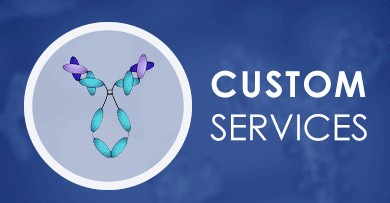+ Filter
 Loading...
Loading...

UBE2A
 Loading...
Loading...Anti-UBE2A Products
- Human Anti-UBE2A Recombinant Antibody (clone AA2) (FAMAB-0270YC)
-
- Derivation: Phage display library
- Species Reactivity: Human
- Type: Human IgG
- Application: IF, IP, WB
-
- Species Reactivity: Human
- Type: Rabbit IgG
- Application: WB, IHC-P, IF
- AbPlus™ Anti-UBE2A Magnetic Beads (AA2) (VS-0424-XY269)
-
- Target: UBE2A
- Target Species: Human
- Application: IP, Protein Purification
- Human Anti-UBE2A Recombinant Antibody (clone AA2); scFv Fragment (FAMAB-0270-YC-S(P))
-
- Derivation: Phage display library
- Species Reactivity: Human
- Type: Human scFv
- Application: IF, IP, WB
- Human Anti-UBE2A Recombinant Antibody (clone AA2); Fab Fragment (FAMAB-0270-YC-F(E))
-
- Derivation: Phage display library
- Species Reactivity: Human
- Type: Human Fab
- Application: IF, IP, WB
- Anti-UBE2A Antibody Prodrug, Protease Activated (AA2) (VS-1025-YC161)
-
- Species Reactivity: Human
- Host Animal: Human
- Target: UBE2A
- Application: ISZ, Cyt, FuncS
View More Products
Can't find the products you're looking for? Try to filter in the left sidebar.Filter By Tag
More Infomation
Our customer service representatives are available 24 hours a day, from Monday to Sunday. Contact Us
For Research Use Only. Not For Clinical Use.
Background
The modification of proteins with ubiquitin is an important cellular mechanism for targeting abnormal or short-lived proteins for degradation. Ubiquitination involves at least three classes of enzymes: ubiquitin-activating enzymes, ubiquitin-conjugating enzymes, and ubiquitin-protein ligases. This gene encodes a member of the E2 ubiquitin-conjugating enzyme family. This enzyme is required for post-replicative DNA damage repair, and may play a role in transcriptional regulation. Mutations in this gene are associated with cognitive disability. Alternative splicing results in multiple transcript variants.
Protein class
Disease related genes, Enzymes, Human disease related genes, Metabolic proteins, Potential drug targets
Predicted location
Intracellular
Single cell type specificity
Cell type enhanced (Syncytiotrophoblasts)
Immune cell specificity
Low immune cell specificity
Cell line specificity
Low cell line specificity
Interaction
Interacts with RAD18 and WAC (PubMed:21329877). Interacts with RFPL4A and CCNB1 (By similarity).
Molecular function
Chromatin regulator, Transferase
More Types Infomation



